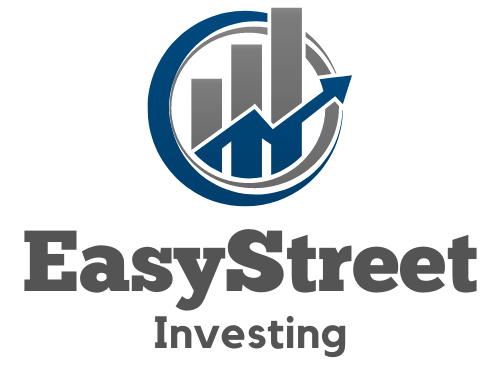Stepping into the realm of peer-to-peer lending platforms can feel like navigating a maze without a map. Fear not, as this guide serves as your compass, offering clear directions for both novices and seasoned investors. By delving into the intricacies of P2P networks, you’ll learn how to evaluate risks, select reliable platforms, and maximize your returns. Whether you’re looking to diversify your portfolio or seeking an alternative to traditional banking loans, this comprehensive guide has got you covered.
As we slice through the jargon and technicalities, you’ll discover the key factors that influence peer-to-peer lending success. From understanding interest rates to recognizing the importance of due diligence, we’ve tailored our insights to help you make informed decisions. Expect to uncover practical tips on safeguarding your investments and strategies to enhance your earning potential—all in plain speak that resonates with both your mind and wallet. Get ready to turn curiosity into confidence as you embark on your P2P journey.
Important Highlights
1. Understand the Risks and Returns: Engaging in peer-to-peer (P2P) lending requires a clear recognition of the potential for both profit and loss. Lenders should be prepared for the possibility that borrowers may default, impacting returns. It is important to diversify investments across multiple loans to mitigate risk. This strategy can help maintain a balance between safer loans with lower returns and riskier loans with potentially higher returns.
2. Evaluate Borrower Creditworthiness: Before committing funds, it’s crucial to assess the borrower’s credit history and rating. P2P platforms typically provide ratings or scores indicating the likelihood of repayment. Stronger credit profiles often translate into lower risks, but they might offer smaller yields compared to loans granted to borrowers with less stellar credit histories.
3. Review Platform Fees and Terms: Each P2P lending platform has its own set of fees, including transaction fees, service charges, or penalties for late payments. Thoroughly examining these fees will help you calculate the true cost of your investment. Additionally, understanding the platform’s terms, such as loan duration options and withdrawal processes, ensures there are no surprises down the line.
4. Leverage Automated Tools: To streamline the investment process, utilize automated tools offered by many P2P platforms that match your investment criteria with suitable loan opportunities. These tools allow you to set parameters such as interest rates, loan durations, and amounts you’re willing to lend, which can save time and align investments with your risk tolerance.
5. Stay Informed on Regulatory Changes: The regulatory landscape for P2P lending is evolving as governments work to protect investors and borrowers alike. Staying abreast of current regulations is essential for compliance and making informed decisions; this includes being aware of tax implications on earned interest. For authoritative information on financial regulations, visiting websites like the U.S. Securities and Exchange Commission can provide valuable insights into industry standards and legal requirements.
Understanding Peer-to-Peer Lending Platforms
Peer-to-peer (P2P) lending platforms connect borrowers directly with investors, bypassing traditional financial institutions. These digital marketplaces allow individuals to obtain loans funded by one or more investors seeking to earn returns on their capital. With P2P lending, credit checks and risk assessments are conducted, ensuring that investors have a clear picture of the potential risks and rewards.
Assessing P2P Platform Trustworthiness
To gauge the reliability of a P2P platform, scrutinize its track record and user reviews. Look for platforms regulated by financial authorities, as this indicates adherence to strict operational guidelines. A strong indicator of credibility is a platform’s partnership with established financial entities, which can often be found on their official website.
Selecting an Investment Approach
Adopt an investment strategy that aligns with your risk tolerance and financial goals. Diversification across various loans can mitigate risk, whereas focusing on high-yield opportunities might offer greater returns but comes with increased exposure. Utilize auto-invest features to streamline the process and adhere to your predetermined criteria.
Navigating Loan Listings
Analyze loan listings meticulously, paying attention to interest rates, borrower credit ratings, loan duration, and default history. Remember that higher-rated borrowers typically pose lower risk but offer lower returns compared to those with lower credit scores.
Evaluating P2P Returns and Risks
Calculate potential returns by considering the interest rate against possible defaults and fees charged by the platform. Weigh these projected earnings against other investment options to determine if P2P lending fits within your portfolio.
Managing Your Investment Portfolio
Maintain regular oversight of your investments, rebalancing when necessary. Monitor market trends and regulatory changes that could impact the performance of your P2P assets.
Understanding Fees Structure
Examine the fee structure carefully; platforms may charge for account setup, service usage, or in the event of a borrower’s late payment or default. Transparent fee structures are critical for accurate return calculations.
Leveraging Secondary Markets
If liquidity is a concern, consider platforms that offer secondary markets where you can sell your invested loans to other users before maturity.
Staying Informed About Legal Considerations
Stay abreast of legal considerations including tax implications of P2P investments which vary by jurisdiction. Consult a tax professional or refer to authoritative resources like IRS guidelines for specifics regarding taxable income from P2P lending investments.
Tapping into Automated Tools
Utilize automated tools provided by many P2P platforms for efficient portfolio management and investment diversification based on personalized risk profiles.
Engaging with Community Forums
Become active in community forums to exchange insights with seasoned investors and gather diverse perspectives on optimizing P2P lending strategies.
Maintaining Privacy and Security Online
Prioritize personal data privacy by choosing platforms known for robust security measures and encryption protocols to safeguard sensitive information.
Making Withdrawals and Understanding Liquidity
Understand withdrawal procedures and the liquidity offered by P2P platforms. Some platforms may impose waiting periods or fees on withdrawals beyond certain limits.
? What Are Essential Tips for Prospering in Peer-to-Peer Lending?
- Conduct thorough due diligence before committing funds to any platform or individual loan.
- Diversify your investment across multiple loans to spread out risk effectively.
- Routinely reassess your investment strategy based on performance data and market conditions.
- Create a balance between reinvesting returns and cashing out profits depending on financial goals.
- Maintain awareness of evolving regulations impacting peer-to-peer lending practices in your region.
- Incorporate feedback from experienced investors utilizing community resources or mentorship programs.
- Familiarize yourself with early exit options in case you need access to funds prior to loan maturity dates.
- Keep detailed records for all transactions for easy reference come tax season or during portfolio evaluations.
- Prioritize user experience when selecting platforms, opting for ones with intuitive interfaces and comprehensive support services.
- Acknowledge that while peer-to-peer lending can be lucrative, it carries inherent risks which should be managed diligently.
Frequently Asked Questions
What is peer-to-peer lending?
Peer-to-peer lending, often abbreviated as P2P lending, is a system where individuals can lend and borrow money directly from each other without the involvement of traditional financial institutions like banks. Platforms online facilitate these exchanges by connecting borrowers with potential investors.
How safe is investing in P2P platforms?
Investing in P2P platforms does carry risk, just like any investment. However, many platforms mitigate this by offering diversification options, vetting borrowers, and sometimes providing a reserve fund to cover potential losses. It’s crucial to research and select reputable platforms.
Can I pick who I lend to on these platforms?
Absolutely! Many P2P lending platforms allow you to choose the individual borrowers or projects you’re interested in funding. This choice lets you align your investments with your personal risk tolerance and interests.
Are the returns on P2P lending better than traditional savings?
Often, P2P lending can offer higher returns compared to traditional savings accounts or CDs. However, with potentially higher returns comes increased risk, so it’s important to weigh both factors carefully.
Is peer-to-peer lending regulated?
Yes, peer-to-peer lending is regulated, but the level of regulation varies depending on the country. In many places, financial authorities oversee the operation of P2P platforms to ensure fair practices and consumer protection.
What fees do P2P platforms charge?
P2P platforms typically charge fees for their services, which can include loan origination fees for borrowers and service fees for lenders. These vary from platform to platform, so be sure to understand all associated costs before engaging.
How long are the loan terms on P2P lending platforms?
The loan terms can range widely from a few months to several years. As a lender or borrower, you’ll have the option to participate in loans that match your preferred timeline.
Can I withdraw my money whenever I want?
This depends on the specific platform and investment terms. Some platforms offer secondary markets where you can sell your loan to another investor, but there’s no guarantee of instant liquidity.
What happens if a borrower defaults on their loan?
If a borrower defaults, the platform will usually step in with their collections process. Investors may recover some funds through this process or through any provision fund the platform has in place; however, some loss should be anticipated.
How do I start with peer-to-peer lending?
To start with P2P lending, research various platforms to find one that suits your needs, create an account, deposit funds, and then begin selecting loans to invest in based on your comfort with risk and return objectives.
In Conclusion: Summing Up Peer-to-Peer Lending Insights
Navigating peer-to-peer lending requires careful consideration and due diligence. By understanding how these platforms operate and recognizing the risks involved, you can make informed decisions that align with your financial goals. Always remember that while higher returns are possible compared to traditional bank products, diversifying your investments and thoroughly researching before committing funds can help safeguard your interests.
The world of peer-to-peer lending continues to evolve with technology advancements and regulatory changes. Staying abreast of these developments will help you adapt your strategies in this dynamic field. Whether you’re looking at short-term gains or building a diverse investment portfolio over time, knowledge is key—and hopefully this guide has illuminated some critical pathways for your financial journey on P2P platforms.

